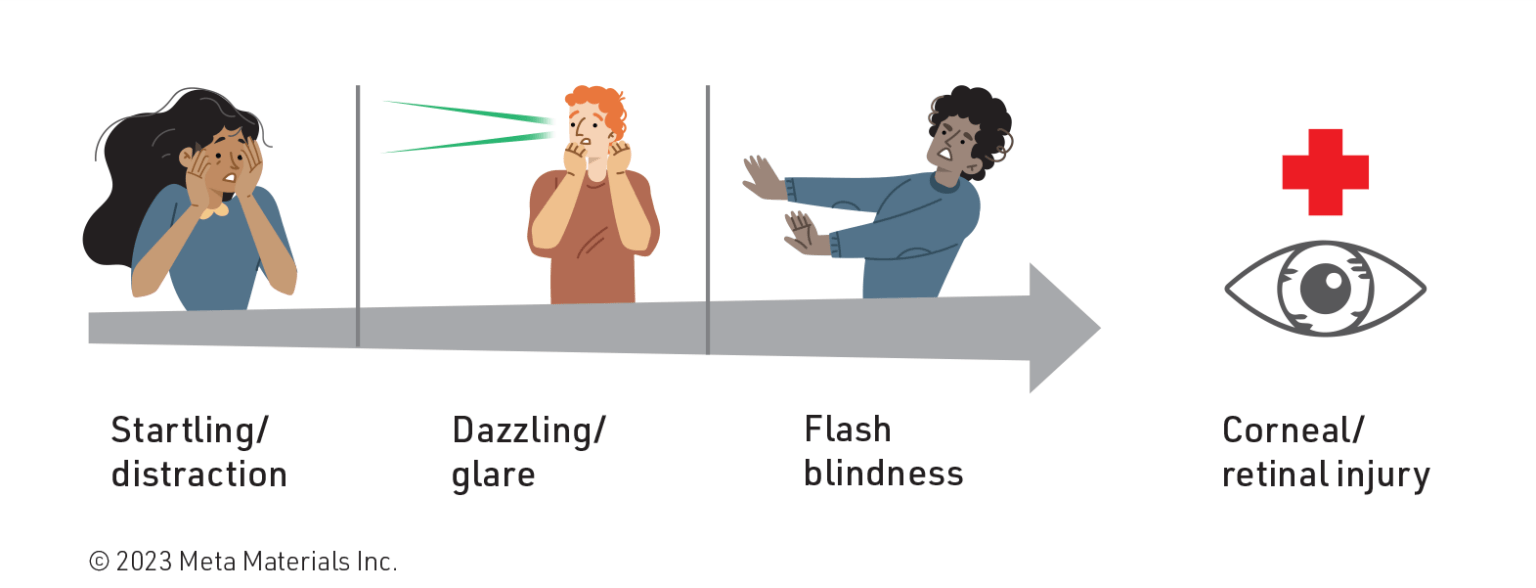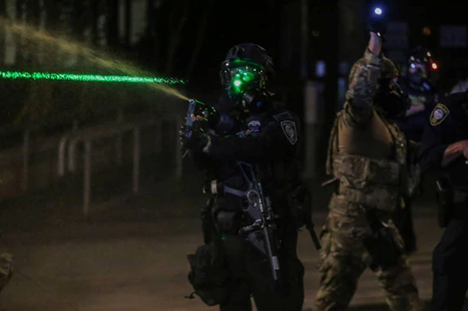Part 1 – What Is Laser Glare Protection And Why Should Your Team Have It? A Special Report For Police Chiefs And Officers
Laser glare protection for law enforcement involves shielding your team of tactical or police officers from laser strikes by equipping them with appropriate protective gear. Laser attacks on law enforcement officers responding to disturbance calls, protests, and riots are on the rise worldwide. This trend can be largely ascribed to two factors:
- Handheld lasers, particularly laser pointers, are easy to access and use, cheap, and portable; and
- Laser glare can distract and visually incapacitate law enforcement officers.
To shield your team of tactical or police officers from laser strikes, you may want to consider equipping them with proper laser glare protection gear.
On the ground, incidents involving the use of lasers with intent to cause distraction and harm have occurred across the globe since as early as the late 1990s. More recently, and stateside, laser pointers have also been employed to attack tactical and police officers in many parts of the country. A police officer with the Los Angeles Police Department sustained debilitating injuries in his right eye from a laser strike when answering a disturbance call in July 2020. Two months later, several police officers in Iowa City were hurt when a man shone a laser beam into their eyes amid protests. Around the same time, at least two men were indicted for assaulting police officers with lasers during demonstrations in Portland, Oregon.
Up in the air, pilots are also frequent victims of laser glare. The U.S. Federal Aviation Administration reported 9,723 laser strikes on aircraft in 2021, a 42% increase over the year before.
What are Laser Strikes?
Lasers are artificial light sources that produce narrow beams of intense, directional, single-color light. Today, laser pointers, the most common form of lasers, are readily available for purchase on the consumer market in a wide range of dimensions, beam colors (for example, green and red), and output powers, and you can get one for as low as under $10.
In the U.S., the Food and Drug Administration (FDA) is the authority responsible for regulating laser products in many aspects like labeling. Based on biological hazard, the FDA categorizes lasers into four major classes. (I to IV, with I being the safest and IV being the most dangerous) with three subclasses (IIa, IIIa, and IIIb)
The use of handheld lasers and laser pointers for unintended, mischievous, and malicious purposes (for example, as weapons against law enforcement in rioting situations in the last case) is becoming an increasingly grave concern. Powerful lasers can emit harmful levels of radiation and cause fire and skin burns.
The Need for Laser Glare Protection
Shining laser light directly into a person’s eyes can have dangerous consequences. The severity depends on many factors such as laser power, beam angle, exposure time, and distance. At the mildest level, such action can startle and distract the person. With strong laser light, you can dazzle the individual, a phenomenon commonly known as the glare effect. Prolonged and intense laser exposure can lead to flash blindness (temporary loss of vision) and, in worst-case scenarios, eye injury due to corneal or retinal damage. These effects may become even worse when the laser light is magnified by optical devices like binoculars and telescopes or under dark conditions when the pupils are dilated and can receive more light. Clinically, cases of eye injury caused by both red and green laser beams have been well documented.

Figure 1. Hazardous effects of laser strikes on eyes
Basic reactions like quick blinking and turning away can shield your eyes partially from the offending laser strikes. But the question is: Are they enough to protect you over the course of a riot or tense situation? Probably not, if you are a law enforcement officer dealing with a hostile environment where you must fend off rocks, sticks, and fists in addition to laser beams. When facing these threats, you and your team will want to have an unobstructed view of your surroundings to maintain situational awareness, which is essential to ensure operational capabilities. This isn’t possible if you need to constantly blink, close, or block your eyes.
Another thing that you should bear in mind is that laser pointers can emit not only visible light but also infrared (IR) light, which is invisible to the naked eye. IR light doesn’t trigger your eyes’ blink reflex but can damage your eyes in the same way as visible light. In this sense, IR light is more dangerous.
Solution? Laser glare protection. For years, scientists have been wearing legacy solutions like dye-tinted goggles to protect their eyes from direct and reflected laser beams when operating laser equipment. This dye-based technology is now used to make eye protection devices for people at risk of laser exposure outside laboratory settings, such as pilots and police officers. The dye-based solution works the same way fundamentally: as a light-absorbing filter to reduce the power of the laser light to a level that is safe to the eye.

To learn more about new light-absorbing and reflecting filters, please read part 2 of our blog —An introduction to laser glare protection solutions. It includes a brief summary of legacy solutions and novel holographic filters. One example of holographic filters is metaAIR® for Law Enforcement (metaAIR® LE), which offers laser glare protection without compromising law enforcement officers’ operational capabilities. Besides ground police and tactical officers, this product can also be used to protect helicopter pilots and crew as well as sensors. Moreover, metaAIR® for Law Enforcement can be tailored to suit your individual needs, including multiple-wavelength glare protection, color balancing, and installation customization for equipment with flat or cylindrically curved surfaces (e.g., helmet visors, shields, and eyewear).
For more information about holographic laser glare protection strips, or to request samples, please click here:

